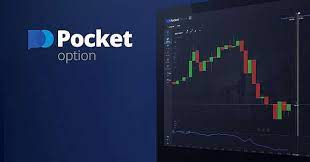
Pocket Option Chart Setup and Analyses
Pocket Option is a popular trading platform that offers various tools and features to enhance the trading experience. In this guide, we will discuss Pocket Option Chart Setup and Analyses https://pocket-option.guide/nastrojka-i-analiz-grafikov/, focusing on how to effectively set up your charts for better trading decisions. Understanding how to interpret charts is crucial for successful trading, and we will delve into various techniques and tips to improve your trading strategies.
Understanding Chart Types
Before setting up your charts on Pocket Option, it’s essential to understand the various types of charts available. The most commonly used chart types include:
- Line Charts: These charts connect closing prices over a specified period, providing a clear visual representation of price movement.
- Bar Charts: These charts show opening, closing, high, and low prices within a specified timeframe, offering more detail than line charts.
- Candlestick Charts: Similar to bar charts, candlestick charts provide opening, closing, high, and low prices but in a more visually engaging format. Each ‘candlestick’ represents price action over a defined period and can indicate market momentum.
Setting Up Your Chart on Pocket Option
Once you have chosen the type of chart you want to work with, follow these steps to set it up on the Pocket Option platform:
- Log in to your Pocket Option account.
- Select the asset you want to trade and navigate to the chart section.
- Choose your preferred chart type (line, bar, or candlestick) from the menu.
- Customize the time frame according to your trading strategy (e.g., 1 minute, 5 minutes, 1 hour).
- Add technical indicators that suit your analysis style. Popular indicators include Moving Averages, RSI, MACD, and Bollinger Bands.
Utilizing Technical Indicators
Technical indicators are vital tools in chart analysis, helping traders make informed decisions. Here’s a closer look at some popular indicators you can use:
- Moving Averages: These indicators smooth out price data to identify trends. The Simple Moving Average (SMA) and the Exponential Moving Average (EMA) are commonly used to determine support and resistance levels.
- Relative Strength Index (RSI): This momentum oscillator measures the speed and change of price movements. An RSI above 70 indicates overbought conditions, while below 30 indicates oversold conditions.
- Moving Average Convergence Divergence (MACD): This trend-following momentum indicator shows the relationship between two moving averages of a security’s price. It’s useful for identifying potential buy and sell signals.
- Bollinger Bands: These bands consist of a middle band (SMA) and two outer bands (standard deviations). They help traders recognize volatility and potential price reversals.
Chart Analysis Techniques

Effective chart analysis relies on a few key techniques that can improve your trading strategy:
1. Support and Resistance Levels
Identifying support and resistance levels is crucial in chart analysis. Support is a price level where buying interest is strong enough to overcome selling pressure, whereas resistance is where selling interest overcomes buying pressure. Traders often set buy orders near support levels and sell orders near resistance levels.
2. Trend Lines
Drawing trend lines on your chart helps identify the direction of the market. An upward trend line connects higher lows, while a downward trend line connects lower highs. Trend lines can act as dynamic support and resistance levels.
3. Chart Patterns
Traders often look for chart patterns, such as head and shoulders, triangles, and flags, to predict future price movements. Recognizing these patterns can provide insights into potential breakouts or reversals.
4. Volume Analysis
Integrating volume analysis into your chart analysis can enhance your trading strategy. Increasing volume often confirms the strength of a price move, while declining volume may signal a potential reversal.
Conclusion
Setting up and analyzing charts on Pocket Option is a fundamental skill for any trader looking to boost their trading performance. By understanding chart types, utilizing technical indicators, and employing effective analysis techniques, you can make more informed trading decisions. Remember that practice is key – regularly analyzing charts will help you develop your skills and refine your trading strategy. Keep experimenting until you find a setup that works best for you, and always stay updated with market trends and news that may impact your trades.
Happy Trading!
